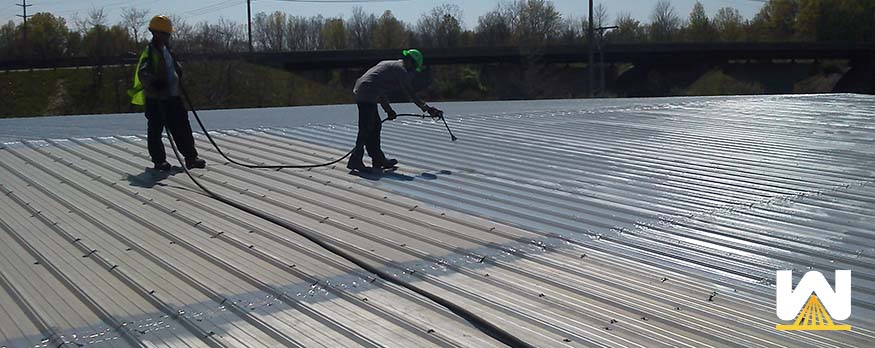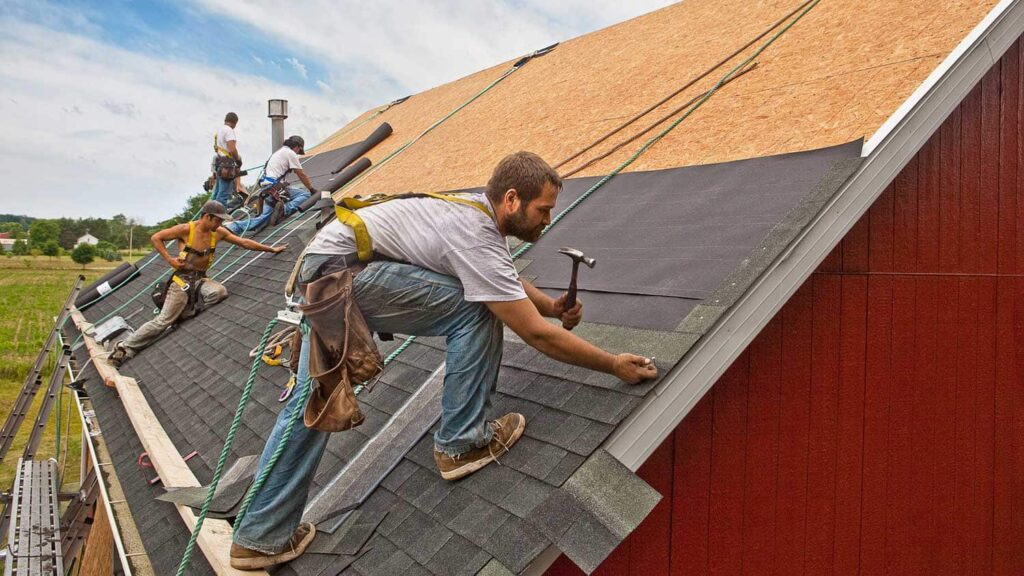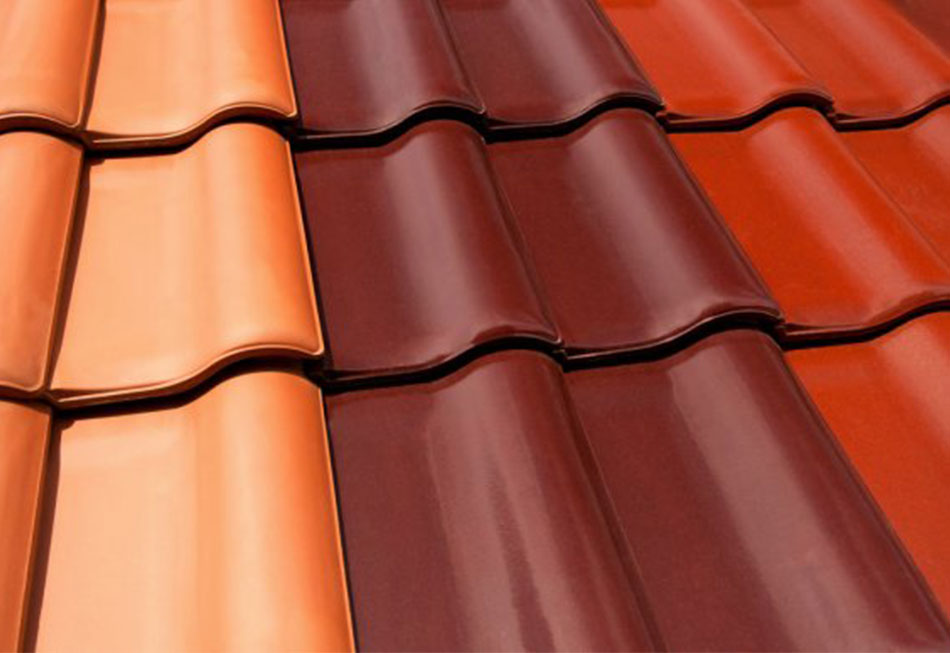Applying roof sealant on a wet roof may seem like a simple and convenient solution to prevent leaks and water damage. However, this seemingly efficient approach can actually lead to more harm than good. In this article, you will discover the key reasons why you should avoid the application of roof sealant on a wet surface. By understanding the potential risks and consequences, you will gain valuable insights into the proper methods for ensuring a durable and long-lasting roof. Don’t be fooled by deceptive shortcuts, equip yourself with the knowledge to make informed decisions when it comes to maintaining your roof’s integrity.
Why You Shouldn’t Apply Roof Sealant on a Wet Roof

This image is property of westroofingsystems.com.
1. Understanding the Role of Roof Sealant
Roof sealant is a commonly used material for maintaining and protecting roofs. It serves the purpose of creating a waterproof barrier that prevents moisture from seeping into the underlying structure of the roof. By sealing gaps, cracks, and joints, roof sealant helps to prolong the lifespan of the roof and preserve its structural integrity.
1.1 The Purpose of Roof Sealant
The primary purpose of roof sealant is to provide a protective layer that prevents water infiltration. It acts as a barrier against rain, snow, and other weather elements, helping to prevent leaks and water damage. Additionally, roof sealant can also provide added insulation, improving energy efficiency and reducing heating and cooling costs.
1.2 Types of Roof Sealants
There are various types of roof sealants available on the market, each designed to cater to different roofing materials and specific applications. The most common types include silicone, acrylic, asphalt-based, and polyurethane sealants. The choice of sealant depends on factors such as the roofing material, climate conditions, and intended use.
1.3 Common Applications of Roof Sealant
Roof sealants are used in a wide range of applications, including sealing roof flashing, repairing small leaks, and protecting vulnerable areas such as vents, chimneys, and skylights. They are also used to reinforce roof coatings, extend the life of flat roofs, and prevent water infiltration in areas prone to standing water.
2. Potential Risks of Applying Sealant on a Wet Roof
While roof sealant is highly effective when applied correctly, attempting to apply it on a wet roof can lead to several potential risks and complications. It is crucial to understand these risks before attempting any applications on a wet surface.
2.1 Limited Adhesion and Poor Performance
One of the main risks of applying sealant on a wet roof is limited adhesion. When the surface is wet, it becomes difficult for the sealant to properly bond with the roof substrate. This can result in poor adhesion and compromised performance of the sealant. As a result, the waterproofing capabilities of the sealant may be significantly reduced, leading to leaks and water damage.
2.2 Trapped Moisture and Mold Growth
Applying sealant on a wet roof can trap moisture beneath the sealant layer. This trapped moisture can create a breeding ground for mold and mildew growth. Mold can cause severe damage to the roof structure and may spread to other areas of the building, compromising indoor air quality and posing health risks to occupants.
2.3 Compromised Durability and Lifespan
Roof sealants are designed to provide long-lasting protection. However, when applied on a wet surface, the durability and lifespan of the sealant can be significantly compromised. Moisture trapped beneath the sealant can cause premature degradation and deterioration of the sealant, leading to the need for frequent repairs and replacements.
3. The Importance of Applying Roof Sealant on a Dry Surface
To ensure the effectiveness and longevity of roof sealant, it is crucial to apply it on a dry surface. This requires proper preparation and adherence to best practices for sealant application.
3.1 Proper Preparation for Sealant Application
Before applying sealant, it is essential to thoroughly inspect the roof for any existing damage. This includes checking for leaks, cracks, or loose shingles. Additionally, it is important to clean the roof surface to remove dirt, debris, and any loose particles that may hinder proper adhesion.
3.2 Ensuring a Dry Roof Surface
To apply sealant on a dry surface, it is necessary to wait for favorable weather conditions. Ideally, the roof should be dry for at least 24 to 48 hours before applying sealant. This allows any residual moisture to evaporate, ensuring a completely dry surface for optimal adhesion and performance.
3.3 Best Practices for Applying Sealant on Dry Roofs
When applying sealant on a dry roof surface, it is crucial to follow manufacturer guidelines and best practices. This includes using the recommended tools and techniques for application, ensuring proper coverage and thickness, and allowing sufficient curing time before exposing the roof to harsh weather conditions.
4. Steps to Take Before Applying Roof Sealant
To ensure the successful application of roof sealant, certain preparatory steps should be taken to address any existing issues and create an optimal surface for sealing.
4.1 Inspecting and Cleaning the Roof
Before applying sealant, thoroughly inspect the roof for any signs of damage or areas that require repair. This includes checking for loose or damaged shingles, cracked flashing, or deteriorated roofing materials. Additionally, clean the roof surface to remove any debris, moss, or algae growth that may hinder the adhesion of the sealant.
4.2 Repairing Any Existing Damage
If any damage or defects are identified during the inspection, it is crucial to repair them before applying sealant. This may involve replacing damaged shingles, fixing flashing, or addressing any other issues that could potentially compromise the integrity of the roof.
4.3 Allowing Sufficient Drying Time
After cleaning and repairing the roof, it is important to allow sufficient drying time before applying sealant. This ensures that the roof surface is completely dry and free from moisture, providing the optimal conditions for the sealant to adhere effectively and perform at its best.

This image is property of media.angi.com.
5. Common Misconceptions about Applying Sealant on Wet Roofs
There are several misconceptions surrounding the application of sealant on wet roofs. It is important to debunk these myths to ensure proper understanding and prevent potential damage to the roof.
5.1 Myth: Sealant Can Be Applied to Fix Leaks Immediately
Contrary to popular belief, applying sealant on a wet roof is not an instant fix for leaks. Sealant requires a dry surface to properly bond and create an effective waterproof barrier. Applying sealant on a wet surface will not address the underlying issue causing the leak and may result in further damage.
5.2 Myth: Rainy Weather Will Help Sealant Bond Better
Some believe that applying sealant during rainy weather can enhance its bonding capabilities. However, this is a myth. Rainy conditions can hinder the sealant’s ability to properly dry and adhere to the roof surface. It is essential to wait for dry weather before applying sealant to ensure optimal adhesion and performance.
5.3 Myth: Applying Sealant on a Wet Roof Saves Time
Attempting to apply sealant on a wet roof in order to save time is not a wise decision. While it may seem convenient at first, the long-term consequences can outweigh any potential time saved. Applying sealant on a wet surface can lead to poor adhesion, compromised durability, and the need for frequent repairs, ultimately costing more time and money in the future.
6. Alternatives to Roof Sealant for Wet Conditions
In situations where a wet roof requires immediate attention, there are alternative options available to address the issue temporarily or seek professional assistance for long-term solutions.
6.1 Temporary Solutions for Roof Leaks
To temporarily address roof leaks on a wet roof, consider using emergency repair products such as roof patching tape or roof tarps. These products can provide a temporary barrier against moisture until the weather conditions allow for proper sealant application.
6.2 Professional Roofing Repairs and Waterproofing Options
If a wet roof requires comprehensive repairs or waterproofing, it is advisable to seek assistance from a professional roofing contractor. They have the knowledge, expertise, and appropriate tools to identify and address the underlying issues effectively. Professional repairs and waterproofing solutions can provide long-lasting results and prevent further damage to the roof.
6.3 Preventive Measures for Future Waterproofing
To prevent future water damage on your roof, consider proactive measures such as regular roof inspections, timely repairs of any identified issues, and applying a waterproof roof coating. These preventive measures can help to maintain the integrity of the roof and minimize the need for costly repairs in the future.

This image is property of www.vivifyroofing.com.au.
7. Conclusion
In conclusion, applying roof sealant on a wet roof is not recommended due to the potential risks and complications it can cause. Proper preparation, including inspecting and cleaning the roof, repairing any existing damage, and ensuring a completely dry surface, is essential for the successful application of sealant. Additionally, it is important to debunk common misconceptions and seek alternative solutions when faced with a wet roof. By following best practices and considering preventive measures, you can ensure the longevity and effectiveness of your roof sealant, protecting your roof and preserving its structural integrity.
